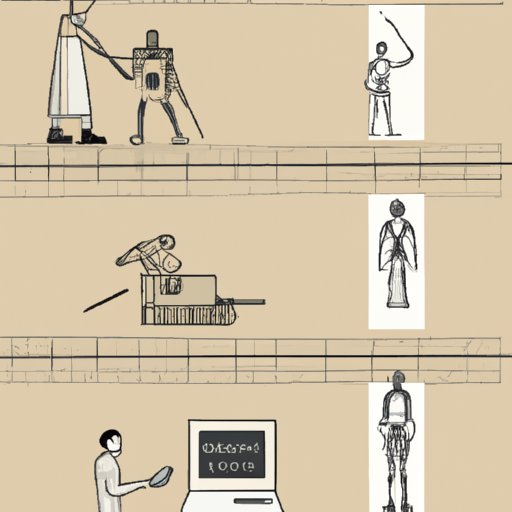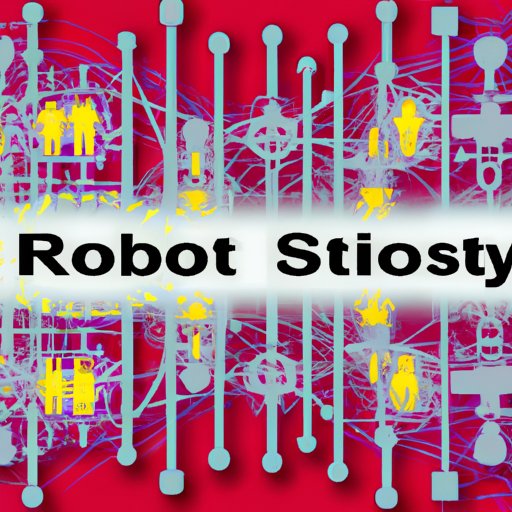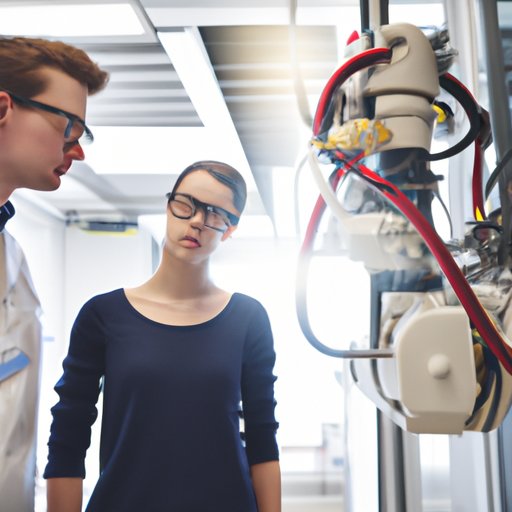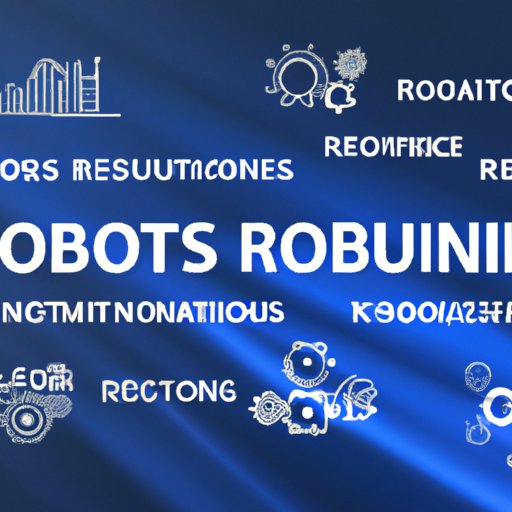Introduction
Robotics is an interdisciplinary branch of engineering and science that includes mechanical engineering, computer science, and electrical engineering. It deals with the design, construction, operation, and use of robots, as well as computer systems for their control, sensory feedback, and information processing. Robotics is related to the sciences of artificial intelligence (AI) and machine learning, which seek to replicate human cognition, perception, and behavior in machines.
In this article, we will explore what robotics is and provide an overview of the topics we will cover. We’ll look at the history of robotics from early automation to modern applications, the types of robots and their uses, the impact of robotics on society, and the benefits and risks associated with robotics. Finally, we’ll take a look at the future of robotics and potential applications.

History of Robotics: A Timeline
The history of robotics dates back to ancient times. Early examples of automation, such as mechanical clocks and automata, can be found in Greek, Chinese, and Egyptian civilizations. The first known robot was built by the Greek mathematician Archytas of Tarentum in the 4th century BCE. This early robot was a wooden bird, powered by steam and capable of flying.
The Industrial Revolution marked a major turning point in the development of robotics. During this era, machines were used to automate tasks that had previously been done by hand. This led to increased efficiency and productivity in manufacturing, as well as improved safety for workers. In the 20th century, the development of computers and electronics enabled the creation of more sophisticated robots.
Today, modern robot technology is used in a variety of industries and applications. Advances in AI and machine learning have enabled robots to become increasingly autonomous and intelligent. This has opened up a range of possibilities for robotics, including medical, military, and space exploration applications.
Types of Robots and Their Uses
Robots come in a variety of shapes and sizes, and can be used for a wide range of tasks. The most common type of robot is the industrial robot, which is used in factories to perform repetitive tasks such as welding, painting, and assembly. Industrial robots are typically large, expensive, and highly specialized.
Service robots are designed to interact with humans and provide assistance or entertainment. Examples include robotic vacuum cleaners, lawn mowers, and pet-care robots. Social robots are designed to simulate human behavior, such as conversational robots that can hold conversations with people. These robots are becoming increasingly popular, particularly in healthcare and education settings.
Space robots are used to explore other planets and conduct scientific experiments in outer space. NASA’s Curiosity rover is one example of a space robot, which is currently exploring the surface of Mars. Space robots can also be used for satellite servicing and maintenance, as well as asteroid mining.

The Impact of Robotics on Society
Robotics technology has had a profound impact on society. On the positive side, it has allowed us to automate mundane tasks, freeing up time for people to focus on creative endeavors. It has also enabled us to explore new frontiers, such as space exploration, and develop innovative products and services.
On the other hand, robotics technology has also had some negative effects. It has caused job displacement in certain sectors, leading to economic insecurity for many workers. Additionally, there are concerns about the ethical implications of using robots for surveillance and military purposes.

Exploring the Benefits and Risks of Robotics
Robotics technology offers numerous advantages. For example, robots can work 24/7 without needing rest, meaning they can increase productivity and reduce costs. They can also perform tasks that are too dangerous or difficult for humans, such as cleaning up hazardous waste sites.
However, there are also risks associated with robotics technology. For example, robots can malfunction and cause accidents or injuries. Additionally, there is a risk of job displacement as robots become increasingly autonomous and intelligent. There are also ethical considerations, such as the potential for robots to be used for nefarious purposes.
The Future of Robotics: What’s Next?
Robotics technology is advancing rapidly, and there are a number of exciting developments on the horizon. Researchers are developing robots that can walk and run, as well as robots that can learn from their environment. There is also research into robots that can collaborate with humans to complete tasks.
The potential applications for robotics are nearly limitless. In the future, robots could be used for search-and-rescue operations, medical treatments, and even space exploration. They could also be used to monitor environmental conditions or to create art.
Conclusion
Robotics is a rapidly advancing field with a range of applications. From industrial robots to space exploration, robots are being used to automate tasks, explore new frontiers, and provide assistance to humans. While there are many benefits associated with robotics, there are also risks that must be considered.
The future of robotics looks bright, with exciting developments on the horizon. As robots become increasingly autonomous and intelligent, they could be used for a variety of tasks, ranging from search-and-rescue operations to space exploration. Whatever the future holds, robotics is sure to remain an important part of our lives.
(Note: Is this article not meeting your expectations? Do you have knowledge or insights to share? Unlock new opportunities and expand your reach by joining our authors team. Click Registration to join us and share your expertise with our readers.)
